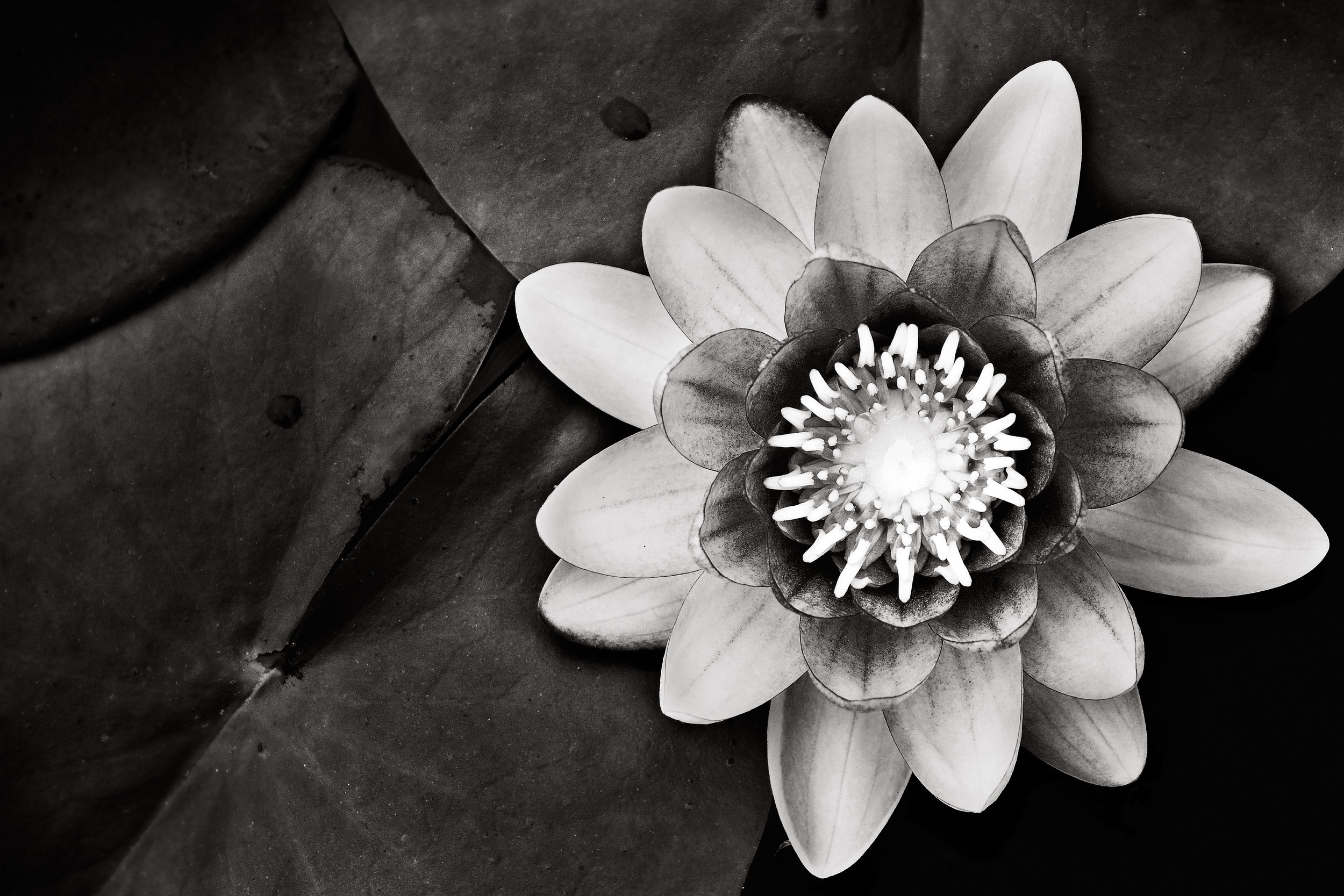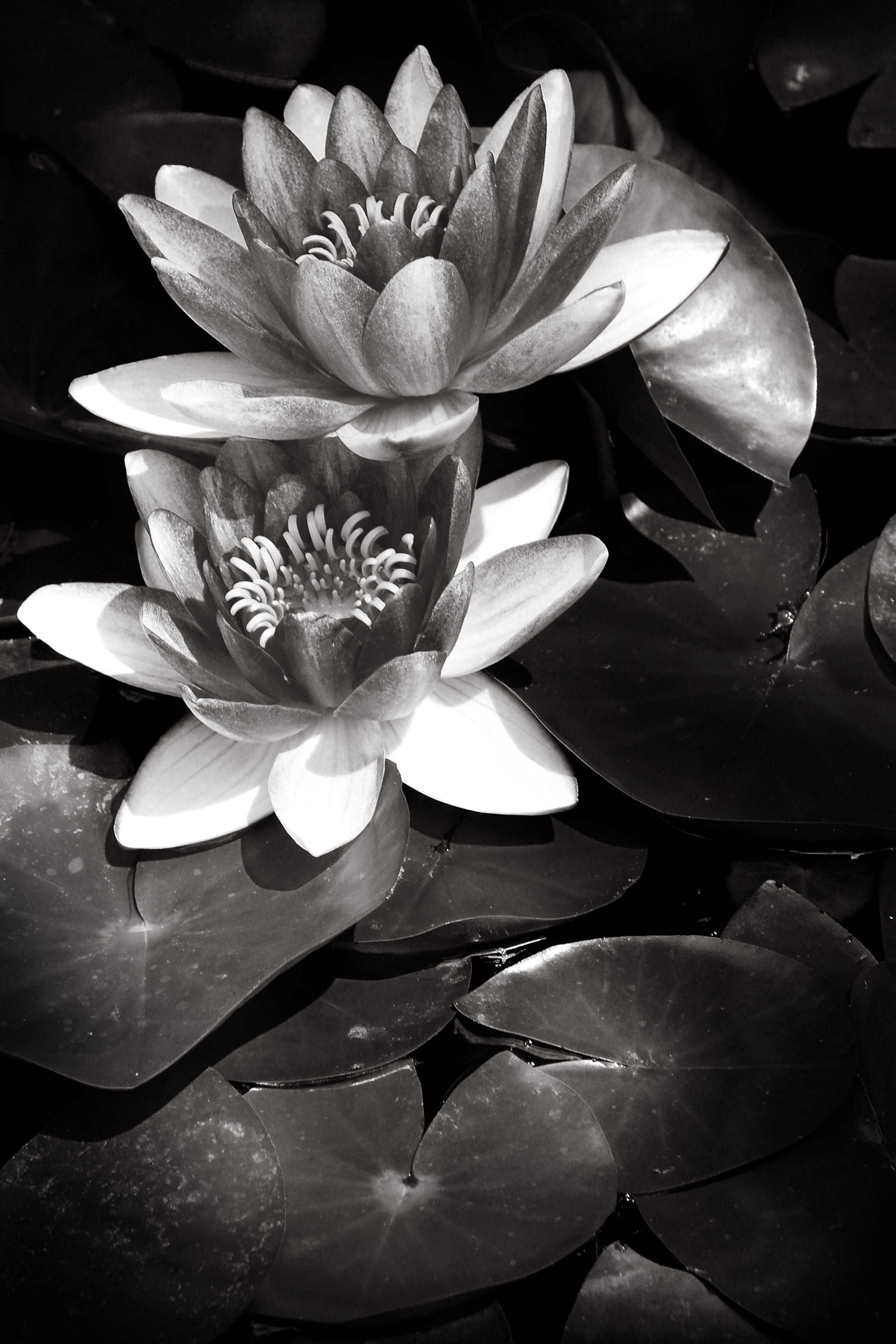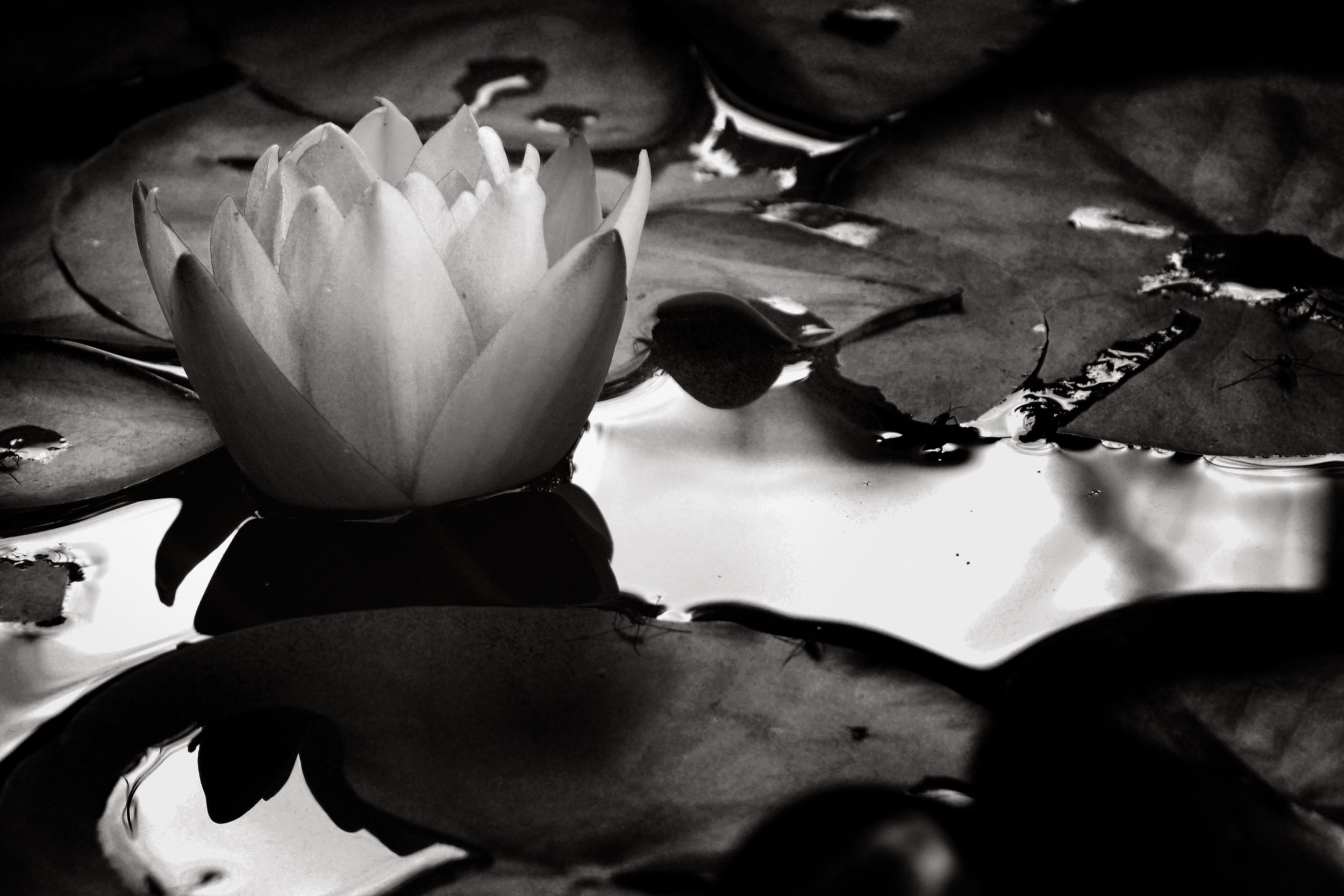The second image I had chosen is this image of my waterlilies in my back pond. This was the template I had used in my head for the Yucca plants. The success of the direct sun and the dark shadows grabbed me. It reminds me of a film noir as far as the scale of gray tones from the dark shadows to the bright whites. This is probably the more successful tonal range in a black and white that I had accomplished.
Why I chose it.
Light, I chose to photograph this subject because the layering of light brings out and the details throughout this image that holds my interest. My eye is drawn first to the flower itself, bright, detailed and textured in the grayscale of the darker peddles. The lighter peddles has a look of collar, reflecting the light on to the subject of the darker and a separator from the leaves around it. Though the flowers are in the spotlight my eye doesn’t stop there but move to the right and down following a circular motion of the leaves. Each pad having just enough light falling on it to give detail and motion from front and moving to the back into the shadows. With the light and softening of focus I can’t help feeling that there is depth to the composition that compels me to explore.
I find beauty in compositions that have depth and motion pleasing to the eye and emotionally gratifying. I did not get the same feeling from the color version of this photograph, in fact I felt conflicted by the red of the flower and the lighting of the subject. I could not get past the red to explore the rest of the image. The red of the flower essentially flatten the composition and stalling the motion of the image. By switching it to black and white the image came alive, more interesting leaving me wanting to look from the bright whites of the flowers to what was hidden in the shadows. Like a good story, this image has layers that moves us through the image, to leave and return to discover more.
I know they are only flowers and the depth I see maybe self-serving but I do think this image has a story and moves the view not only to search the image but upon returning, find new details missed from before. To me that is what I am hoping for, an image that is not only pleasing but one that makes you want to look at more than a few times. This is why I feel it would be a good image to donate to the hospital.
What do you think? Am I reading too much into it? Is this a good image for the hospital or not? I’d like to hear from you, good or bad. Leave a comment or email me what you think so far and you could be picked to win a matted and signed copy of your favorite image.
Thanks again and feel free to share this or any other post.





